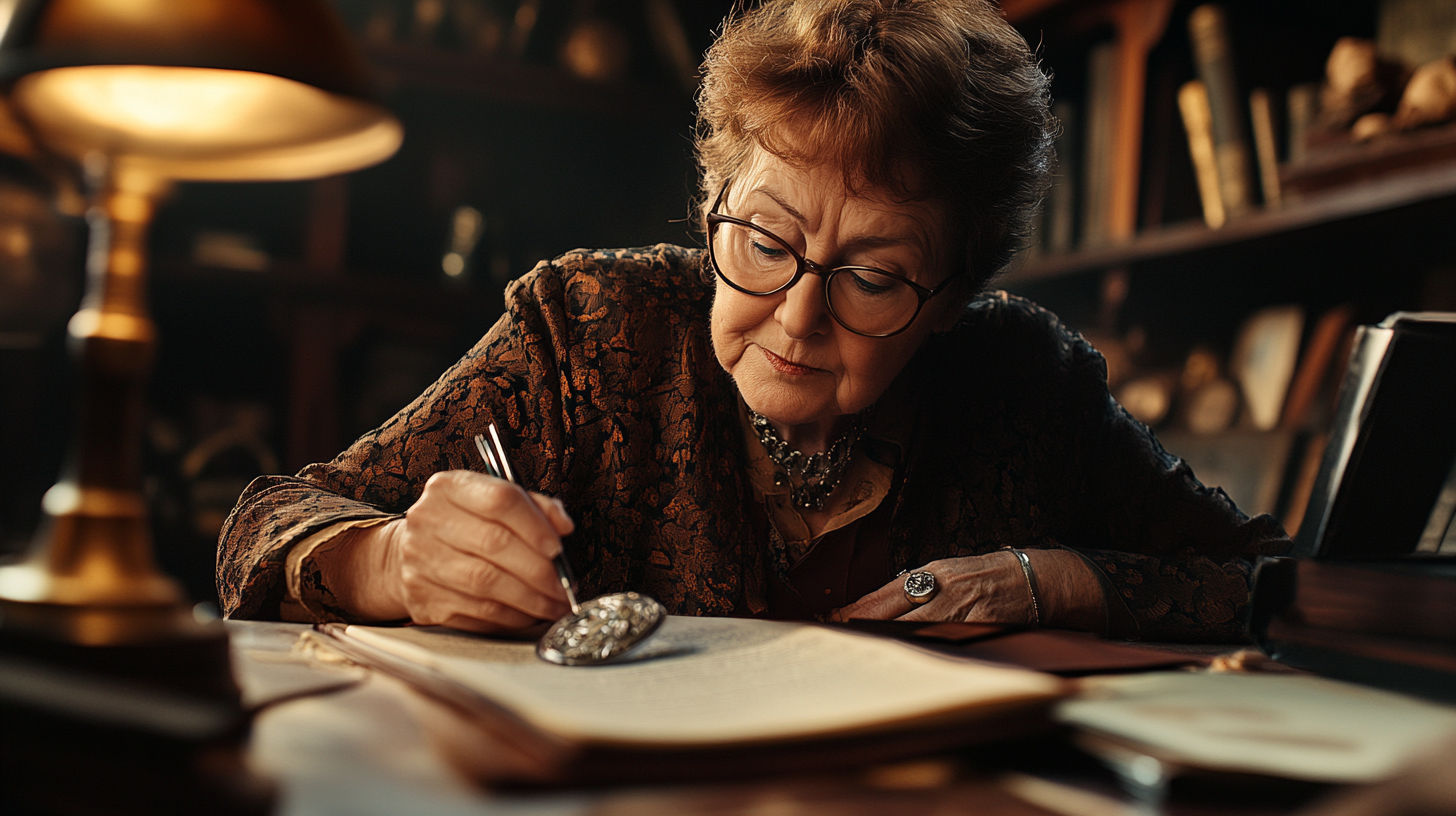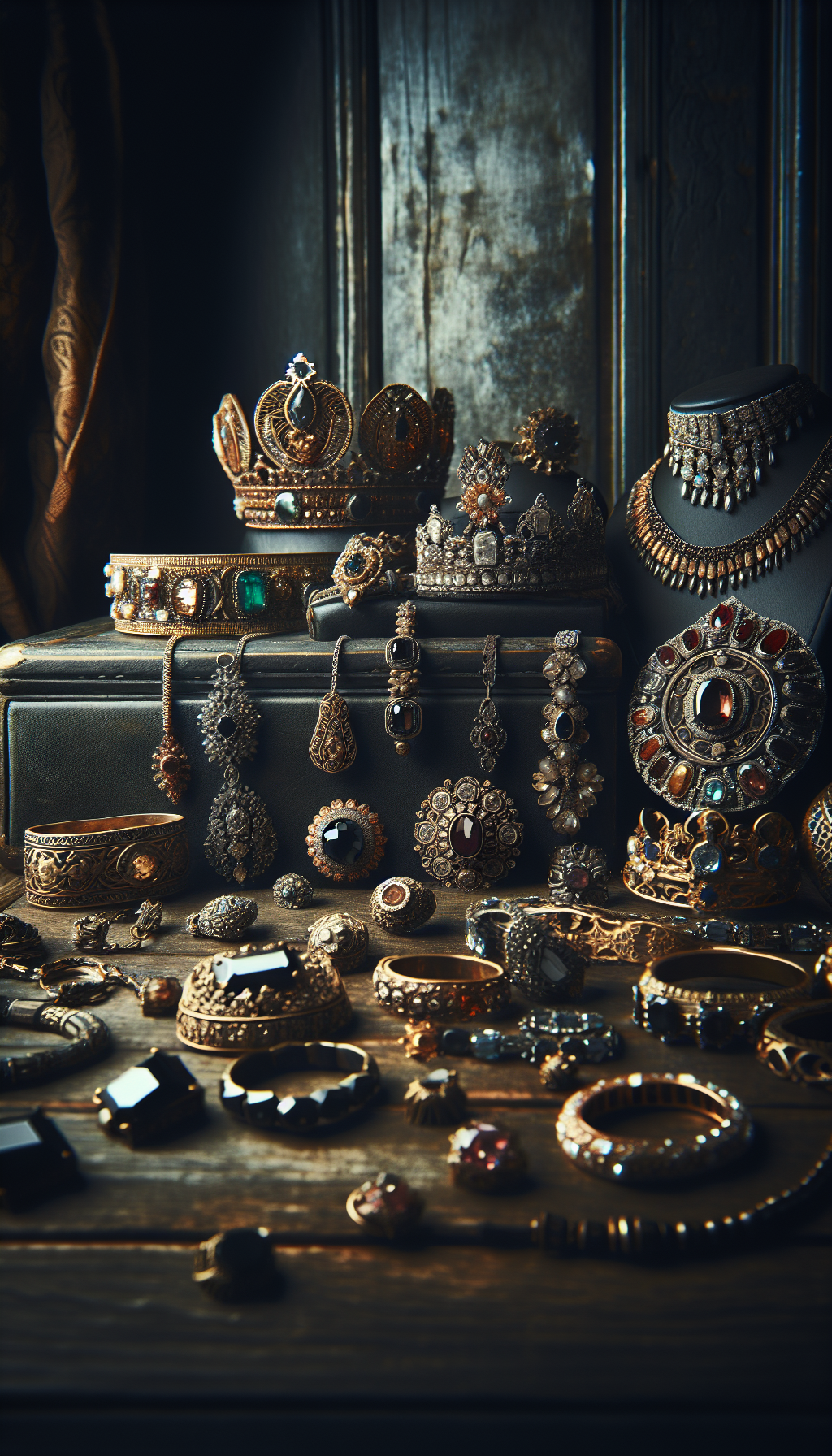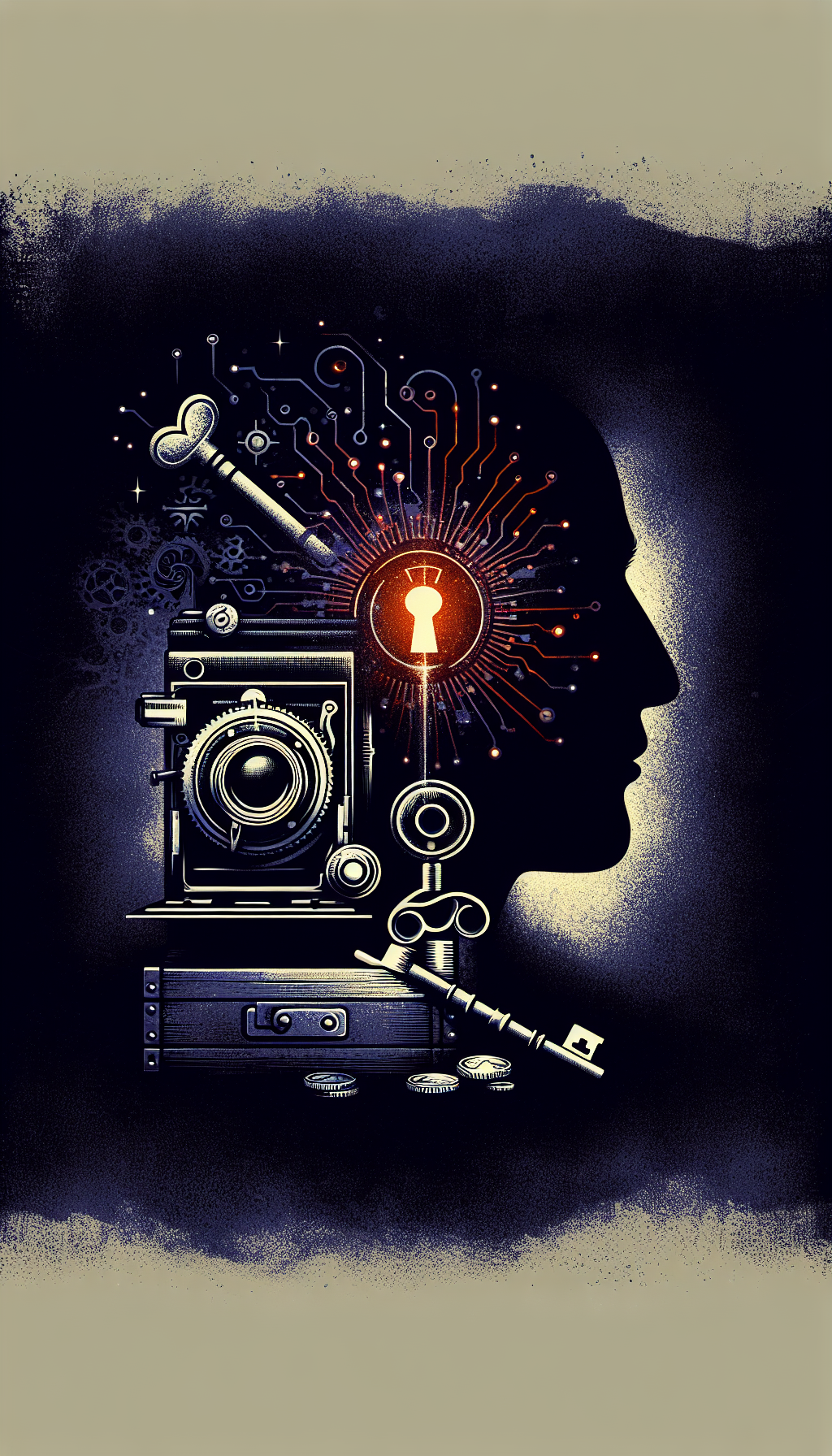Introduction to Antique Appraisals
Whether you’ve inherited family heirlooms, discovered potential treasures at estate sales, or simply want to know the value of your vintage collectibles, understanding how antique appraisals work is essential. An expert evaluation not only reveals the monetary value of your items but can also uncover fascinating historical details and provenance that might otherwise remain hidden.
What Is an Antique Appraisal?
Appraisals serve different purposes depending on your needs:
- Insurance appraisals determine replacement value for coverage purposes
- Estate appraisals establish fair market value for inheritance or tax purposes
- Donation appraisals document value for charitable contribution tax deductions
- Retail appraisals help determine selling prices for antique dealers
- Liquidation appraisals establish values for quick sales in divorce or estate settlements
Antique Appraisal Industry Facts
Types of Antique Appraisal Services
In-Person Appraisals
When visiting an appraiser, be prepared to provide:
- Any documentation about the item’s history or provenance
- Information about when and where it was acquired
- Any repair or restoration work that has been performed
- Previous appraisals or valuations if available
Many dealers like Syl-Lee Antiques in NYC offer free verbal assessments as a way to build client relationships, but remember that these informal evaluations don’t provide the detailed documentation needed for insurance or tax purposes.
Online Appraisal Services
Popular online appraisal platforms include:
- ValueMyStuff offers expert appraisals from former Sotheby’s and Christie’s specialists within 24-48 hours from $28
- Heritage Auctions provides free evaluations for items they might accept for auction
- Fox-White Art & Antique Appraisals offers independent valuations for fine art and antiques
When submitting items for online appraisal, high-quality photographs are essential. Include multiple angles, close-ups of any signatures, marks, or damage, and measurements to help the appraiser make an accurate assessment.
Appraisal Events and Roadshows
While television shows like Antiques Roadshow have popularized the excitement of discovering hidden treasures, keep in mind that these quick evaluations typically focus on interesting items with good stories rather than providing comprehensive appraisals for all items.
Antique Appraisal Service Comparison
Typical costs and features of different appraisal options
</tbody>
</table>
Finding Qualified Antique Appraisers
Credentials to Look For
Look for appraisers affiliated with these professional organizations:
- International Society of Appraisers (ISA)
- American Society of Appraisers (ASA)
- Appraisers Association of America (AAA)
- Art Dealers Association of America (ADAA) for fine art
Membership in these organizations indicates that the appraiser follows a code of ethics, maintains professional standards, and stays current with market trends and valuation methodologies.
Specialization Matters
Consider these specialized appraisal options based on your items:
- For jewelry and precious metals, firms like Global Gold & Silver specialize in these valuations
- For fine art, Victoria Shaw Art Appraisals offers expert assessments
- For general antiques in the Hudson Valley area, Rhinebeck Antique Emporium provides specialized services
Appraiser Selection Checklist
Essential criteria to consider when choosing an antique appraiser
- Belongs to a recognized professional appraisal organization
- Specializes in your type of item
- Transparent about their fee structure
- Can provide references or testimonials
- Clearly explains their appraisal methodology
- Provides written reports for formal appraisals
- No conflict of interest (not trying to buy your items)
- Maintains confidentiality about your possessions
The Appraisal Process Explained
What to Expect During an Appraisal
A typical appraisal process includes:
- Initial consultation - Discussing your items and appraisal needs
- Physical examination - Detailed inspection of condition, markings, and characteristics
- Documentation - Photographing and measuring the items
- Research - Investigating provenance, comparable sales, and market trends
- Analysis - Determining value based on all collected information
- Report preparation - Creating a comprehensive written appraisal document
For formal appraisals, you’ll receive a written report that includes:
- Detailed description of each appraised item
- Photographs documenting the items
- Statement of the valuation approach used
- Explanation of how values were determined
- Appraiser’s qualifications and signature
- Date of valuation (important since values change over time)
Timeline of a Typical Formal Appraisal
- Day 1
Initial Contact & Scheduling
Contact appraiser to discuss your needs and schedule either an on-site visit or delivery of items. - Day 2-3
Item Examination
Appraiser examines items in detail, takes photographs, measurements, and notes about condition and distinctive features. - Day 4-7
Research Phase
Appraiser researches comparable sales, auction records, and market trends to establish accurate values. - Day 8-10
Report Preparation
Appraiser compiles findings into a formal written report with photographs and value justifications. - Day 11-14
Delivery & Review
Report is delivered to client with opportunity to discuss findings and ask questions.
Factors That Affect Antique Values

Key Determinants of Value
1. Provenance and Documentation
Provenance—the documented history of ownership—can significantly impact value. Items with well-documented provenance, especially those owned by notable individuals or with interesting historical connections, often command premium prices.
Good documentation includes:
- Original receipts or bills of sale
- Letters of authenticity
- Exhibition history
- Publication in reference books
- Photographic evidence of previous ownership
- Family histories and inheritance records
2. Condition
Condition is paramount in antique valuation. While some patina and signs of age are expected and even desirable, damage, repairs, and inappropriate restoration can substantially decrease value.
Condition factors include:
- Structural integrity
- Completeness (all original parts present)
- Surface condition
- Presence of original finish
- Previous restoration quality
- Mechanical functionality (for clocks, watches, etc.)
3. Rarity and Scarcity
Rarity significantly impacts value—items produced in limited quantities or with few surviving examples typically command higher prices. However, rarity alone doesn’t guarantee value; the item must also be desirable to collectors.
4. Quality and Craftsmanship
Superior workmanship, innovative design, and exceptional materials contribute to higher valuations. Items from renowned makers or design houses generally command premium prices.
5. Current Market Demand
Market trends and collector interests continuously evolve, affecting values. For instance, mid-century modern furniture has seen substantial appreciation in recent years as collector interest has grown.
Notable Recent Antique Auction Results
Sample sales demonstrating value factors in action
| Category | Price | Notes |
|---|---|---|
| In-Person Formal Appraisal | $250-$350 for first item | Most comprehensive; suitable for insurance, estate, and legal purposes |
| Online Professional Appraisal | $28-$150 per item | Convenient; varies in detail based on service level |
| Verbal Dealer Assessment | Often free | Informal; no documentation provided |
| Appraisal Events | $5-$50 per item | Quick evaluations; limited time with each item |
</tbody>
</table>
DIY Assessment Before Professional Appraisal

Preliminary Research Techniques
Identifying Makers’ Marks and Signatures
Many antiques bear identifying marks:
- Ceramics and porcelain: Look for backstamps, impressed marks, or painted signatures on the bottom
- Furniture: Examine backs, undersides, and drawer interiors for maker’s labels or stamps
- Jewelry: Check for hallmarks, purity marks, or maker’s marks, often tiny and requiring magnification
- Art: Look for signatures, typically in bottom corners or on the reverse side
Using Reference Books and Online Databases
Research resources include:
- Reference books: Specialized collector guides offer detailed information on marks, styles, and values
- Auction archives: Websites like LiveAuctioneers and Invaluable archive past auction sales
- Museum collections: Many major museums have online databases of their collections
- Collector forums: Specialized communities may help identify unusual items
Mobile Apps for Initial Identification
Several mobile applications can help with preliminary identification:
- Google Lens: Uses image recognition to identify objects and find similar items online
- RelicSnap: Specialized app for antique identification by image
- WorthPoint: Provides access to a large database of sold antiques with values
As highlighted in the research data, apps like RelicSnap can be useful companion tools for antique exploration, though they should not replace professional appraisals for valuable items.
Essential Documentation to Prepare
Create a dossier for each significant item including:
- Photographs: Clear images from multiple angles, including any damage or repairs
- Measurements: Accurate dimensions (height, width, depth, diameter, weight for jewelry)
- Provenance documentation: Any receipts, certificates, family records, or historical information
- Previous appraisals: Earlier valuations, even if outdated
- Restoration history: Details of any repairs, refinishing, or conservation work
- Your own research notes: Information you’ve gathered about maker, period, or style
This preparation demonstrates seriousness and helps the appraiser provide a more accurate and comprehensive valuation.
Costs and Considerations
Understanding Appraisal Fees
Most professional appraisers use one of these fee structures:
- Hourly rate: Typically $150-$300 per hour
- Per-item fee: Starting at $250-$350 for the first item, with additional items at $25-$100 each
- Percentage of value: Less common but sometimes used for very high-value items (typically 1-10% of appraised value)
- Flat fee: For entire collections or estates, based on estimated time and complexity
According to Worth Wise Appraisers, formal appraisals for a single item typically start at $250-$350, with additional items adding incremental costs between $25 and $100 each.
Be wary of appraisers who:
- Offer free appraisals but are primarily interested in buying your items
- Base their fee on a percentage of the appraised value (creates potential conflict of interest)
- Cannot clearly explain their fee structure upfront
Insurance and Tax Implications
Insurance Considerations
For valuable antiques, standard homeowner’s insurance policies often provide insufficient coverage. A professional appraisal may be required to:
- Obtain specialized insurance riders or floaters for high-value items
- Document replacement value in case of loss, damage, or theft
- Update coverage as values appreciate over time
Most insurance companies recommend updating appraisals every 3-5 years for valuable items, as market values can change significantly.
Tax Implications
Appraisals are essential for various tax situations:
- Estate taxes: When settling estates containing valuable antiques
- Charitable donations: For tax deductions on donated items valued over $5,000
- Casualty losses: When claiming insurance for damaged or stolen items
- Gift taxes: When transferring valuable items to family members
For IRS purposes, appraisals must meet specific requirements:
- Performed by a qualified appraiser with demonstrated expertise
- Completed no earlier than 60 days before the date of contribution for donations
- Include specific information required by IRS regulations
Online vs. In-Person Appraisals: Pros and Cons
Comparing Appraisal Options
Online Appraisal Advantages
- Accessibility: Access to specialists regardless of your location
- Convenience: No need to transport potentially fragile items
- Cost efficiency: Often less expensive than in-person appraisals
- Speed: Many online services offer quick turnaround times of 24-48 hours
- Multiple opinions: Easier to obtain several evaluations for comparison
Online Appraisal Limitations
- Limited examination: Appraiser cannot physically handle items to assess condition, weight, or materials
- Photo dependency: Quality and accuracy depend heavily on the images you provide
- Less comprehensive: Reports may contain less detail than in-person appraisals
- Authentication challenges: Some fakes or reproductions are difficult to identify without physical examination
When In-Person Appraisals Are Essential
In-person appraisals are particularly important for:
- High-value items where details matter significantly
- Objects where authentication is critical
- Items with complex construction or materials
- Pieces where condition assessment requires physical examination
- Collections requiring inventory management
When Online Appraisals Are Sufficient
Online appraisals may be adequate for:
- Initial evaluations to determine if more thorough appraisal is warranted
- Items of moderate value with clear identifying characteristics
- Objects that are easily recognizable from photographs
- Situations where convenience outweighs the need for extreme precision
Services like ValueMyStuff offer online appraisals from former Sotheby’s and Christie’s experts starting at $28, making them an accessible option for initial valuations.
Specialized Antique Categories and Their Appraisal Considerations
Fine Art
Key considerations for fine art appraisals include:
- Attribution: Confirming the work is by the stated artist
- Provenance: Ownership history and exhibition record
- Condition: Original state vs. restoration or damage
- Subject matter: Some subjects command higher prices within an artist’s work
- Size and medium: Larger works and preferred mediums often value higher
- Period: Works from an artist’s most desirable period typically command premium prices
- Market demand: Current collector interest in the artist or style
Specialists like Fox-White Art Appraisals focus exclusively on fine art valuation, bringing essential expertise to this complex category.
Jewelry and Watches
Jewelry appraisers evaluate:
- Materials: Quality and quantity of precious metals and gemstones
- Craftsmanship: Construction techniques and quality of execution
- Designer/Maker: Pieces by renowned jewelry houses command premiums
- Age and style: Period pieces from desirable eras like Art Deco are highly valued
- Condition: Original components vs. replaced elements
- Rarity: Unusual designs or limited production pieces
For rare or high-value pieces, specialized gemological testing may be required, including:
- Authentication of gemstones
- Testing of metal composition
- Verification of maker’s marks
Furniture and Decorative Arts
Furniture appraisers examine:
- Construction details: Joinery techniques, secondary woods, drawer construction
- Materials: Type and quality of woods, original hardware, upholstery
- Finish: Original vs. refinished surfaces (original often more valuable)
- Maker identification: Signatures, labels, or construction characteristics
- Style authentication: Distinguishing period pieces from later reproductions
- Condition: Structural integrity, repairs, replaced components
Services like Rhinebeck Antique Emporium specialize in furniture and decorative arts from different periods, offering expertise that general appraisers may lack.
What to Do After Getting an Appraisal
Acting on Appraisal Results
Insurance Documentation
If your appraisal was for insurance purposes:
- Contact your insurance provider to discuss coverage options
- Determine if you need riders or specialized coverage for valuable items
- Keep digital and physical copies of appraisal reports in secure locations
- Schedule reappraisals at intervals recommended by your insurer (typically every 3-5 years)
Sale Preparation
If you’re considering selling appraised items:
- Research appropriate sales channels based on the item’s value and category
- For high-value items, consider auction houses like Heritage Auctions
- For mid-range items, explore specialized dealers or online platforms
- Use appraisal information to set appropriate reserves or asking prices
- Provide potential buyers with appraisal information to build confidence
Collection Management
For collectors looking to manage or develop their collections:
- Create a detailed inventory based on appraisal information
- Identify strengths and gaps in your collection
- Use valuations to inform future acquisition decisions
- Consider conservation recommendations from the appraiser
- Develop a long-term collection management plan
Estate Planning
For estate planning purposes:
- Share appraisal information with your estate planner or attorney
- Consider tax implications and strategies
- Document your wishes regarding specific valuable items
- Consider charitable donations with tax benefits
- Discuss distribution plans with heirs to prevent disputes
Finding Appraisers Near You
Local Appraisal Resources
Professional Organizations
These associations maintain directories of certified appraisers:
Local Resources
In the New York area, several highly-rated appraisal services are available:
- APR57, Lee the Appraiser - Rated 4.5/5 from over 500 reviews
- Fox-White Art & Antique Appraisals - Perfect 5/5 rating
- Sutton Place Antiques and Appraisals - Specialized appraisal services
Auction Houses and Museums
Many auction houses offer appraisal services, even if you’re not immediately planning to sell. Regional museums sometimes host appraisal days or can recommend local experts in specific categories.
What to Ask Before Hiring
When contacting potential appraisers, ask these key questions:
- What are your credentials and specializations?
- Do you have experience with items similar to mine?
- What is your fee structure and what does it include?
- Will I receive a written report, and what information will it contain?
- Is there any conflict of interest I should know about?
- How long will the appraisal process take?
- What information or preparation do you need from me?
External Appraisal Resources
Syl-Lee Antiques: Antique Valuations and Appraisals
Professional antique evaluation and appraisal services in NYC and Long Island, offering free initial assessments for antiques, fine art, and jewelry.
Heritage Auctions: Free Online Appraisals
Submit photos and descriptions to receive free evaluations from Heritage Auctions experts for potential auction items.
ValueMyStuff: Online Art & Antique Appraisals
Quick online appraisals from former Sotheby's and Christie's experts within 24-48 hours, starting at $28 per item.
Rhinebeck Antique Emporium: Appraisal Services
Hudson Valley antique appraisal services offering free verbal assessments and formal written appraisals for various antique categories.
Antiques Roadshow Appraisals Database
Extensive database of appraisals from the popular PBS television show, searchable by category, value, and keyword.
Hudson Valley Antique Appraisals
Expert appraisal services for art, antiques, books, and estate contents throughout the Hudson River Valley region.
Common Appraisal Myths and Misconceptions
Separating Fact from Fiction
Myth: Age Alone Determines Value
Reality: While age is a factor, many relatively recent items command high prices while some very old items have minimal value. Rarity, condition, desirability, and craftsmanship often matter more than age alone.
Myth: Appraisers Will Always Buy Your Items
Reality: Ethical appraisers maintain independence by separating appraisal services from purchasing. Those who offer to buy items they appraise face a conflict of interest that could lead to undervaluation.
Myth: Online Research Can Replace Professional Appraisals
Reality: While online research provides useful background information, it cannot replace the expertise of a professional appraiser who understands market nuances, can authenticate items, and has access to comprehensive sales databases.
Myth: All Antiques Appreciate in Value
Reality: Value trends vary widely based on changing tastes, market conditions, and collector interests. Some categories that were highly valued decades ago have declined significantly, while others have seen remarkable appreciation.
Myth: Family Stories About Value Are Usually Accurate
Reality: Family legends often exaggerate the value or significance of heirlooms. While these stories can provide important provenance information, they require verification through professional assessment.
Myth: Appraisers Can Always Provide Exact Values
Reality: Appraisers typically provide value ranges rather than exact figures, reflecting the inherent variability of the market and the unique nature of many antiques. Even the most experienced appraisers cannot predict precisely what an item will sell for in different market conditions.
New Technologies in Antique Appraisals
Digital Tools Transforming the Industry
Mobile Apps and AI Recognition
Mobile applications now offer preliminary identification capabilities:
- Image recognition technology can help identify maker’s marks, patterns, and styles
- Apps like RelicSnap use artificial intelligence to assist with initial antique identification
- Price database apps provide access to recent comparable sales
While these tools are valuable for preliminary research, they typically supplement rather than replace professional expertise for valuable items.
Online Price Databases
Digital archives have transformed research capabilities:
- Subscription databases track auction results and retail prices worldwide
- Historical sales data helps establish value trends over time
- Access to international markets provides broader context for valuation
Services like WorthPoint and LiveAuctioneers offer extensive archives of sold items with prices.
Virtual and Augmented Reality
Emerging technologies are creating new possibilities:
- Virtual reality allows remote examination of items in three dimensions
- Augmented reality can overlay information about marks, patterns, or damage
- Digital modeling helps compare items to authenticated examples
These technologies are particularly valuable for remote appraisals and educational purposes.
Authentication Technologies
Scientific methods increasingly support traditional expertise:
- Specialized photography (ultraviolet, infrared, x-ray) reveals details invisible to the naked eye
- Material analysis identifies age-appropriate components
- Digital signature tracking creates secure provenance records
These technologies are particularly valuable for high-value items where authentication is critical.
Common Questions About Antique Appraisals
How much does it cost to get an appraisal on antiques?
Appraisal costs vary depending on the service type and items being appraised. Formal written appraisals for a single item typically start at $250-$350, with additional items adding incremental costs between $25 and $100 each. Many dealers offer free verbal appraisals, but these won't provide the documentation needed for insurance or tax purposes.
Online appraisal services like ValueMyStuff offer more affordable options starting around $28 per item, though these may not be as comprehensive as in-person evaluations for complex or high-value items.
How do I get my antique valued?
You have several options for getting your antiques valued:
- Antique dealers often offer free verbal evaluations, especially if you visit their shops
- Auction houses provide free appraisals for items they might accept for sale
- Professional appraisers offer formal written appraisals for a fee
- Online appraisal services allow you to submit photos for expert evaluation
- Appraisal events hosted by museums or historical societies offer opportunities for evaluation
For valuable items or those requiring documentation for insurance or tax purposes, hiring a certified appraiser is recommended. For initial assessments, antique auctions and dealers can provide helpful insights at little or no cost.
Is there an app to identify and value antiques?
Yes, several apps can help identify and provide preliminary valuations for antiques:
- RelicSnap uses AI technology to identify antiques from photographs
- Google Lens can recognize objects and find similar items online
- WorthPoint provides access to a large database of sold antiques with prices
- LiveAuctioneers allows you to search past auction results
While these apps are useful for initial research, they have limitations and should not replace professional appraisals for valuable items. The technology continues to improve, but human expertise remains essential for authentication and precise valuation.
How often should I get my antiques reappraised?
Most experts recommend getting valuable antiques reappraised every 3-5 years, as market values can change significantly over time. However, more frequent appraisals may be necessary in these situations:
- After significant market changes affecting your items’ category
- Following restoration or conservation work
- After relevant major auction sales establish new price benchmarks
- When planning to sell, insure, or donate items
- For insurance coverage purposes (as required by your policy)
Some categories like fine art, rare coins, and jewelry often see more volatile price movements and may benefit from more frequent reappraisals.
What's the difference between a verbal estimate and a formal appraisal?
Verbal estimates and formal appraisals differ significantly:Verbal Estimates:
- Usually free or low-cost
- No written documentation provided
- Based on quick visual examination
- Not accepted for insurance, tax, or legal purposes
- Often provided by dealers or at appraisal events
Formal Appraisals:
- Professional fee charged
- Comprehensive written report provided
- Based on thorough examination and research
- Accepted for insurance, tax, and legal purposes
- Conducted by certified appraisers following professional standards
- Includes detailed descriptions, photographs, and value justifications
While verbal estimates are useful for getting a general idea of value, formal appraisals are necessary for official purposes and provide much more detailed information.
Should I clean or restore my antiques before an appraisal?
Generally, you should NOT clean or restore antiques before an appraisal. Here's why:
- Improper cleaning can permanently damage items and reduce their value
- Original patina and aged finishes are often desirable and valuable
- Appraisers need to see the true condition to make accurate assessments
- Restoration decisions should be made after professional consultation
- Evidence of age and use can help authenticate pieces
If you’re concerned about the appearance of your items, simply dust them gently with a soft cloth. Let the appraiser advise you on any cleaning or restoration that might be appropriate after examination.
Can I get a tax deduction for donating appraised antiques?
Yes, you can potentially receive tax deductions for donating appraised antiques to qualified organizations, but specific IRS requirements must be followed:
- For items valued over $5,000, you must obtain a qualified written appraisal
- The appraisal must be conducted no earlier than 60 days before the donation
- The appraiser must meet IRS qualification standards
- You must complete IRS Form 8283 and attach it to your tax return
- For items valued over $20,000, you may need to submit a complete copy of the appraisal
The deduction amount is typically based on the fair market value of the donated items. Consult with a tax professional and ensure your appraiser is familiar with IRS requirements for charitable donation appraisals.
Can appraisers tell if my antique is authentic?
Yes, qualified appraisers use multiple methods to authenticate antiques:
- Visual examination of construction techniques, materials, and aging patterns
- Knowledge of maker’s marks and signature characteristics
- Stylistic analysis comparing to known authentic examples
- Provenance research tracing the item’s history
- Technical analysis when necessary (wood analysis, paint composition, etc.)
For highly valuable items or those with uncertain authenticity, specialized authentication may be recommended, sometimes involving scientific testing or consultation with specific experts. Reputable appraisers will be transparent about authentication challenges and will note any uncertainties in their reports.
Conclusion: Making the Most of Your Antique Appraisal Experience
Antique appraisals serve as valuable tools for understanding both the monetary and historical significance of your treasured items. By approaching the appraisal process with proper preparation and realistic expectations, you can maximize the benefits while gaining deeper appreciation for your possessions.
Whether you’re seeking appraisals for insurance purposes, estate planning, potential sales, or simply satisfying curiosity about family heirlooms, working with qualified professionals ensures you receive accurate and useful information. The investment in proper appraisal services typically pays dividends in better decision-making, appropriate insurance coverage, and peace of mind.
Remember that antique values evolve with market trends and collector interests. Regular reappraisals of significant items help you stay informed about changing values and make timely decisions about conservation, insurance, or potential sales.
By understanding the appraisal process, preparing thoroughly, and selecting appropriate experts for your specific items, you transform the appraisal experience from a simple valuation into an educational journey that enhances your connection to history through the objects that have survived to tell their stories.
Get a Professional Appraisal
Unsure about your item’s value? Our certified experts provide fast, written appraisals you can trust.
- Expert report with photos and comps
- Fast turnaround
- Fixed, upfront pricing
No obligation. Secure upload.
| Item | Price | Date | Auction House | |
|---|---|---|---|---|
| 18th Century Chippendale Secretary Desk | $32,500 | January 2023 | Christie's | Excellent condition with documented provenance |
| Tiffany "Wisteria" Table Lamp | $575,000 | December 2022 | Sotheby's | Rare example with original shade and base |
| George Nakashima Conoid Bench | $47,500 | March 2023 | Phillips | Strong market demand for mid-century masterworks |
| Art Deco Diamond Bracelet | $28,750 | April 2023 | Bonhams | Original condition with period documentation |




